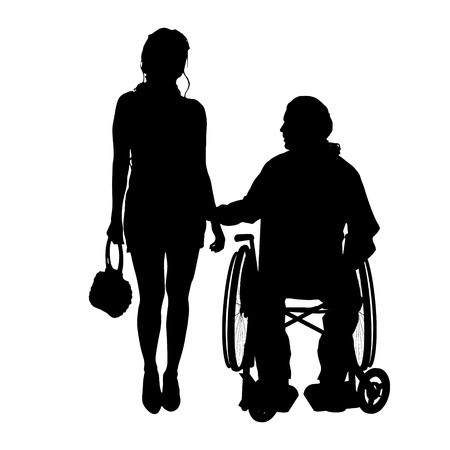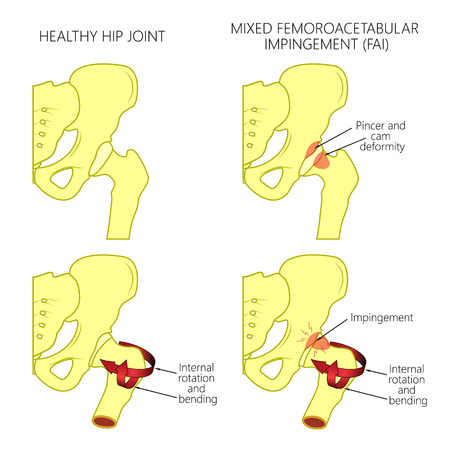Introduction to Mobility Aids in the UK
Mobility aids have played a pivotal role in British society, offering individuals with limited mobility the means to retain their independence and actively participate in daily life. From the early days of basic walking sticks and crutches to today’s advanced rollators, these devices have evolved alongside societal attitudes towards disability and inclusion. Historically, mobility challenges were often stigmatised or hidden, yet over time, there has been a marked shift towards recognising the value of empowerment and accessibility. In the UK, this transformation is evident not only in technological advancements but also in public policy and community support structures. The significance of mobility aids extends beyond mere function; they are symbols of autonomy, dignity, and the ongoing commitment to fostering an inclusive society where everyone can move freely and confidently.
2. Traditional Crutches: Foundations of Support
The origins of mobility aids in the UK can be traced back to traditional crutches, which have served as the bedrock of support for individuals with walking difficulties for centuries. The design of classic crutches has evolved in response to both practical needs and local materials, but their core function—providing stability and balance—has remained unchanged. In Britain, traditional crutches were often crafted from sturdy woods such as ash or oak, reflecting both the country’s abundant natural resources and its woodworking heritage.
Design Evolution of Classic Crutches
| Era | Material | Design Features | Common Usage |
|---|---|---|---|
| Pre-20th Century | Wood (Ash, Oak) | Simple underarm or forearm models; hand-carved handles | Injuries, war-related disabilities |
| Mid-20th Century | Wood, Early Aluminium | Padded supports; adjustable height introduced | Rehabilitation, post-polio care |
| Late 20th Century to Present | Aluminium, Composite Materials | Lightweight frames; ergonomic grips; non-slip tips | Elderly support, post-surgery recovery |
Social and Cultural Associations in the UK Context
Traditional crutches hold a unique place within British society. Historically, their use has been closely linked with periods following major conflicts such as the World Wars, when returning veterans were a common sight on the streets of towns and cities across the UK. Crutches thus became not only medical devices but also symbols of resilience and recovery. Moreover, they have appeared in British literature and media as icons of both vulnerability and perseverance—often representing the challenges faced by individuals with disabilities.
The Role of the NHS and Accessibility Initiatives
The establishment of the National Health Service (NHS) in 1948 marked a turning point in the accessibility of mobility aids like crutches. The NHS ensured that high-quality mobility support was available to all who needed it, regardless of social class or income. This egalitarian approach reinforced the cultural significance of crutches as everyday objects rather than luxury items reserved for the privileged few.
Conclusion: A Foundation for Progress
Traditional crutches laid the groundwork for subsequent innovations in mobility aids across the UK. Their evolution reflects changing social attitudes towards disability and accessibility, setting the stage for more advanced devices such as rollators. Understanding their historical context illuminates how far mobility technology—and societal inclusion—has come in Britain.

3. Walking Sticks and Frames: Expanding Options
The progression of mobility aids in the UK saw a significant leap with the introduction of walking sticks and frames, most notably the Zimmer frame. These devices emerged as practical solutions for individuals who required more support than crutches could provide, particularly in terms of balance and stability. The walking stick, often crafted from wood or lightweight metal, became a familiar sight across British towns and cities. Its straightforward design belied its effectiveness, offering users increased confidence when navigating uneven pavements or tackling the unpredictable British weather.
The Zimmer frame, named after its inventor in the 1950s, quickly gained traction within the NHS and among private users alike. Unlike single-point supports such as canes or sticks, the frame’s four-legged design distributed weight more evenly and dramatically reduced the risk of falls. This was especially beneficial for elderly individuals and those recovering from surgery or injury. The adoption of walking frames in the UK was driven by both clinical recommendation and community acceptance, reflecting a broader societal commitment to inclusivity and independent living.
By addressing growing needs for stability and ease of movement, walking sticks and frames marked a pivotal chapter in the evolution of mobility aids. Their widespread use not only improved personal safety but also facilitated greater social participation for people with limited mobility—an essential aspect of British life that values both resilience and community engagement.
4. The Advent of Rollators: Modern Mobility Solutions
The introduction of rollators in the UK marked a transformative step in the evolution of mobility aids, bridging the gap between traditional walking supports and contemporary needs for independence and comfort. Unlike static crutches or basic walking frames, rollators combine stability with dynamic mobility, significantly enhancing users’ autonomy and social participation.
Contemporary Innovations in Rollator Design
Modern rollators have evolved beyond their initial utilitarian purpose. British manufacturers and designers have incorporated lightweight materials, ergonomic hand grips, adjustable heights, and integrated seating. Many models now feature shopping baskets, reflectors, and even digital tracking for health monitoring—catering to the UK’s ageing population and their desire for safety, style, and practicality.
| Feature | Traditional Walking Frames | Modern Rollators |
|---|---|---|
| Material | Steel/Aluminium | Lightweight Aluminium/Carbon Fibre |
| Maneuverability | Lift-and-move required | Wheeled movement (often four wheels) |
| Additional Functions | None/minimal | Baskets, seats, brakes, reflectors |
| User Adjustability | Limited height adjustment | Fully adjustable handles and frame height |
| Aesthetics | Basic design | Range of colours/styles available |
British User Preferences and Social Impact
The adoption of rollators in Britain has been shaped by both practical considerations and cultural attitudes towards disability and independence. Focus groups consistently reveal that British users value discretion, compactness for public transport use, and ease of folding for storage at home or in cars. There is also a clear preference for models that blend into urban environments—an important consideration in cities like London or Manchester where space is at a premium.
NHS Adoption and Standardisation
The NHS has played a pivotal role in mainstreaming rollator use across the UK. Recognising the benefits for rehabilitation, fall prevention, and long-term independence, NHS trusts have integrated rollators into their standard mobility aid offerings. This institutional endorsement not only ensures access through prescription but also encourages further innovation as suppliers compete to meet NHS specifications regarding durability, maintenance, and patient safety standards.
Summary of NHS Rollator Provision Criteria:
| Criterion | Description |
|---|---|
| Safety Compliance | All models must meet BS EN ISO 11199-2:2005 standards. |
| User Assessment | NHS physiotherapists assess suitability based on individual needs. |
| Maintenance Support | Provision includes regular servicing and repairs. |
The widespread acceptance of rollators reflects a uniquely British approach: balancing innovation with inclusivity, while ensuring public health frameworks remain responsive to evolving user requirements.
5. Policy, Accessibility, and the NHS
The evolution of mobility aids in the UK cannot be fully understood without considering the significant influence of governmental policy, accessibility standards, and the pivotal role of the National Health Service (NHS). These elements have collectively shaped not only the availability but also the design and distribution of mobility aids, ensuring that individuals with varying levels of mobility impairment receive appropriate support.
Government Initiatives and Legislative Framework
Successive UK governments have introduced initiatives aimed at improving the lives of disabled individuals. Landmark legislation such as the Disability Discrimination Act 1995, later succeeded by the Equality Act 2010, laid a legal foundation for equal access and non-discrimination in public services and spaces. These acts compelled local authorities and service providers to address physical barriers, which in turn drove demand for more advanced and accessible mobility solutions, from traditional crutches to contemporary rollators.
The NHS: Provision and Guidelines
The NHS has long been central to the provision of mobility aids across the country. Through comprehensive assessment processes and clinical guidelines, the NHS ensures that patients are matched with devices tailored to their medical needs. The standardisation of assessment protocols has contributed to a more equitable distribution of equipment, while ongoing collaboration between clinicians, engineers, and manufacturers promotes innovation in both function and comfort. This has led to the gradual replacement of basic crutches with ergonomically designed walking frames and lightweight rollators that meet modern expectations for safety and usability.
Accessibility Standards Shaping Design
In parallel with legislative change and NHS practice, British Standards Institution (BSI) codes and building regulations have promoted universal design principles. Public infrastructure—from transport systems to healthcare facilities—must now accommodate users of a wide range of mobility aids. This regulatory environment fosters continuous improvement in aid design, ensuring compatibility with lifts, ramps, accessible toilets, and public spaces. Ultimately, these standards not only improve daily life for aid users but also encourage manufacturers to innovate in response to evolving requirements.
Together, policy frameworks, NHS involvement, and rigorous accessibility standards have established an environment where innovation is both encouraged and required. As a result, modern rollators seen on British streets today are emblematic of a broader societal commitment to inclusivity, reflecting decades of progress driven by both statutory mandates and practical healthcare delivery.
6. Future Perspectives on Mobility in Britain
As we look ahead, the landscape of mobility aids in Britain is poised for further transformation, fuelled by rapid advancements in technology and a growing recognition of the diverse needs within British communities. Ongoing research continues to push boundaries, with universities and healthcare innovators collaborating on projects that integrate smart materials, artificial intelligence, and user-focused design into new mobility solutions.
Technological Innovations Shaping the Future
The integration of digital technologies is already redefining what mobility aids can offer. Smart rollators equipped with sensors, GPS tracking, and fall-detection systems are emerging, providing not only physical support but also enhanced safety and independence for users. Additionally, the development of lightweight yet durable materials—such as carbon fibre composites—makes these devices more manageable and less physically taxing.
Personalisation and Inclusivity
A key trend in British healthcare is the move towards personalisation. Mobility aids are increasingly being tailored to suit individual lifestyles, preferences, and medical conditions. Customisable features—from adjustable grips to modular accessories—allow users across the UK to maintain their sense of identity while benefiting from greater comfort and usability.
The Role of Community and Policy
The evolving role of mobility aids extends beyond individual use; it reflects broader societal shifts towards inclusivity and accessibility. Local councils, charities, and advocacy groups are actively shaping public spaces and transport networks to be more accommodating for those using mobility equipment. Government initiatives focusing on disability rights continue to influence policy, ensuring that innovation is matched by equal access for all citizens.
Looking Forward: A Holistic Approach
In summary, the future of mobility in Britain will likely be defined by a holistic approach—one that combines cutting-edge technology, personalised solutions, community engagement, and robust policy frameworks. As traditional crutches give way to modern rollators and beyond, the ongoing evolution promises a society where everyone can move freely, confidently, and with dignity.


